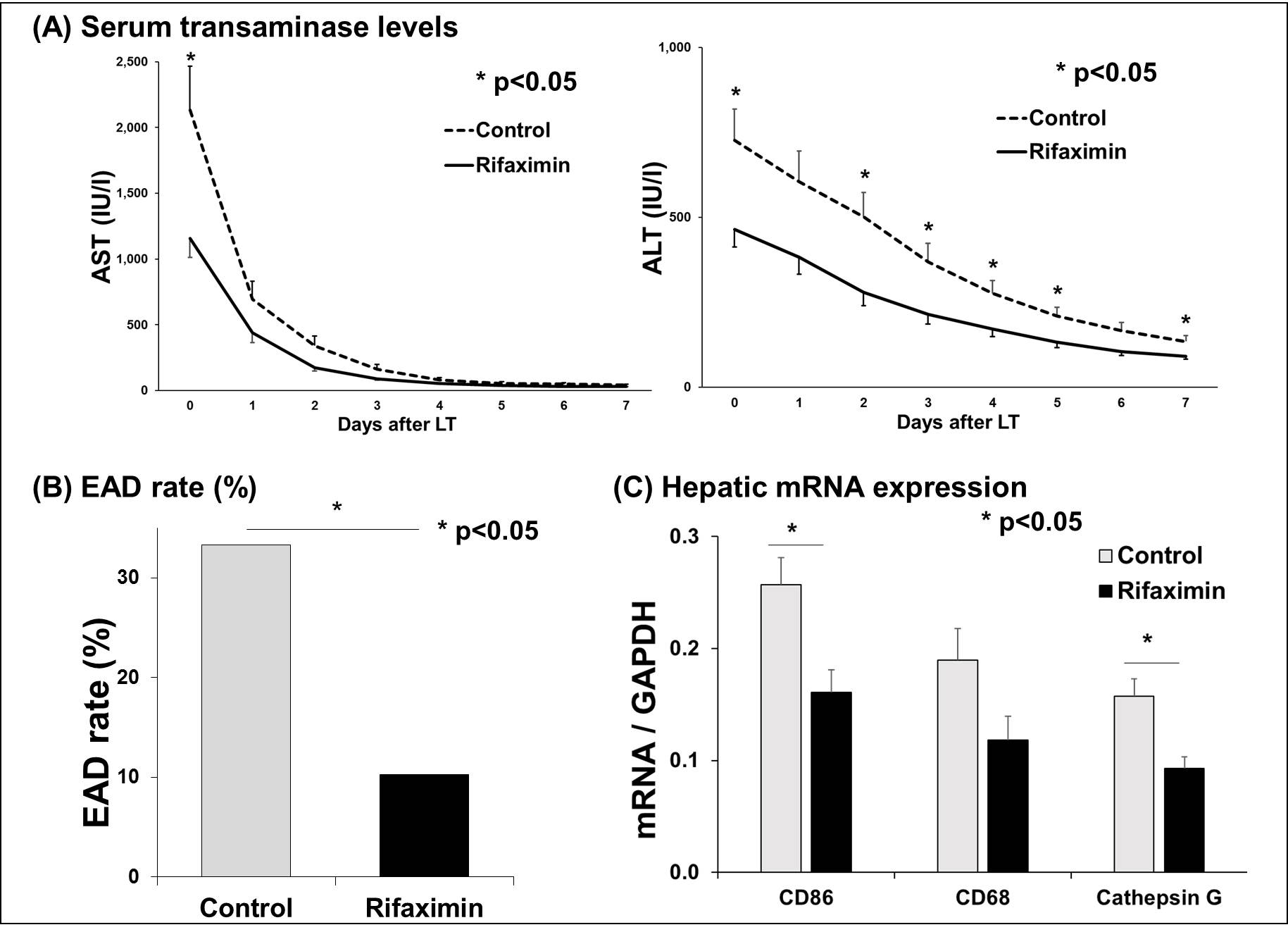Impact of Preoperative Rifaximin Use on Reducing Graft Injury in Liver Transplantation: A Propensity Matched Analysis
Department of Surgery, The Dumont-UCLA Transplant Center, Los Angeles, CA
Meeting: 2019 American Transplant Congress
Abstract number: 102
Keywords: Graft failure, Vaccination
Session Information
Session Name: Concurrent Session: Non-Organ Specific:Organ Preservation/Ischemia Reperfusion Injury
Session Type: Concurrent Session
Date: Sunday, June 2, 2019
Session Time: 2:30pm-4:00pm
 Presentation Time: 3:42pm-3:54pm
Presentation Time: 3:42pm-3:54pm
Location: Room 209
*Purpose: Intestinal microbiota are thought to play an important role in affecting the multifactorial and complex mechanisms of hepatic ischemia reperfusion injury (IRI) after liver transplantation (LT). Rifaximin, a non-absorbed antibiotic commonly used to treat encephalopathy exhibits broad spectrum antibacterial activity within the gut. We hypothesized that pre-LT rifaximin use may reduce post LT graft IRI. We report the first study to the best of our knowledge examining the impact of pre-LT rifaximin use on hepatic IRI after LT.
*Methods: Patients were divided into two groups based on duration of rifaximin use within 28 days of LT (-28 days to day of LT): Continuous Rifaximn (CR) (use for all 28 days), and control (none or any rifaximin use 0-27 days). Patients receiving any other antibiotics within 28 days of LT and re-transplants were excluded. A 1:1 propensity matched analysis was performed. Patient and graft outcomes were compared. mRNA expression patterns were compared using Mann-Whitney U test. (single center, retrospective, 520 adult LT, Jan. 2013 – Jun. 2016)
*Results: Of 520 patients, 206 (n=157 control vs n=49 CR) met inclusion criteria. On 1:1 matching (n=39 control: n=39 CR). CR patients had lower levels of postoperative serum transaminases (Fig A) and a lower rate of EAD (10.3% vs 33.3%, p=0.014, Fig B). There was no difference in graft or patient between the matched and non-matched groups. Of the matched patients, 8 patients (4/group) had post reperfusion liver biopsies (2h post reperfusion) available for mRNA analysis. Expression of CD86, a marker for macrophage activation and cathepsin G, a marker of neutrophil presence in the liver were lower in CR than control (0.17 vs 0.25/ GAPDH, p=0.029) and (0.10 vs 0.16/ GAPDH, p=0.029) respectively (Fig C).
*Conclusions: This propensity score matched analysis suggests a therapeutic role of rifaximin in reducing EAD. Pre-LT rifaximin administration appeared to have a protective effect against early liver injury potentially by suppressing inflammatory cell activation in the graft. Additional studies may be needed to further elucidate this relationship.
To cite this abstract in AMA style:
Ito T, Nakamura K, Kageyama S, Hirao H, Kadono K, Aziz J, DiNorcia J, Agopian VG, Yersiz H, Farmer DG, Busuttil RW, Kupiec-Weglinski J, Kaldas FM. Impact of Preoperative Rifaximin Use on Reducing Graft Injury in Liver Transplantation: A Propensity Matched Analysis [abstract]. Am J Transplant. 2019; 19 (suppl 3). https://atcmeetingabstracts.com/abstract/impact-of-preoperative-rifaximin-use-on-reducing-graft-injury-in-liver-transplantation-a-propensity-matched-analysis/. Accessed December 12, 2025.« Back to 2019 American Transplant Congress

